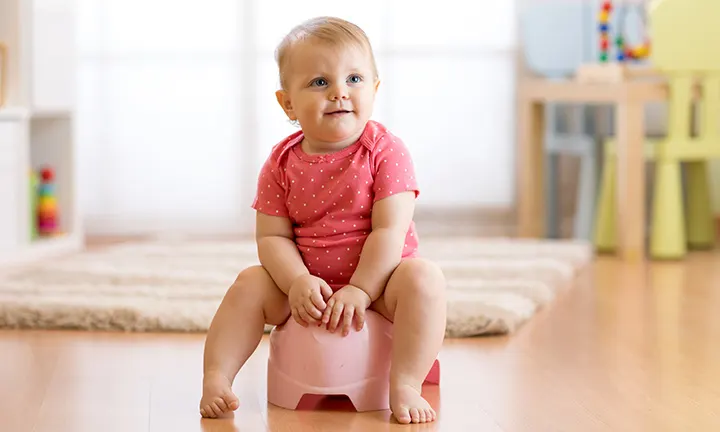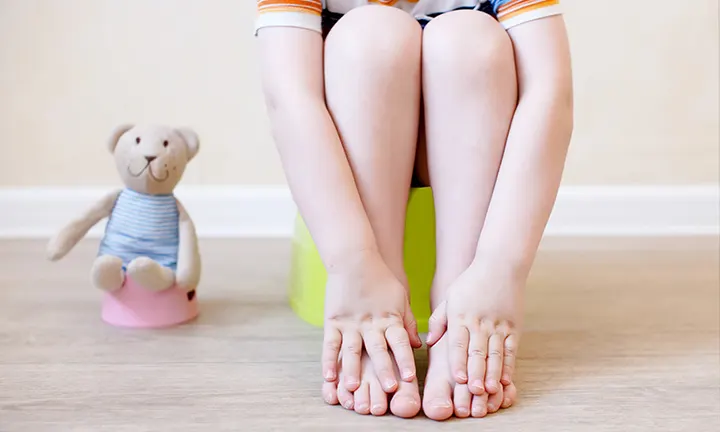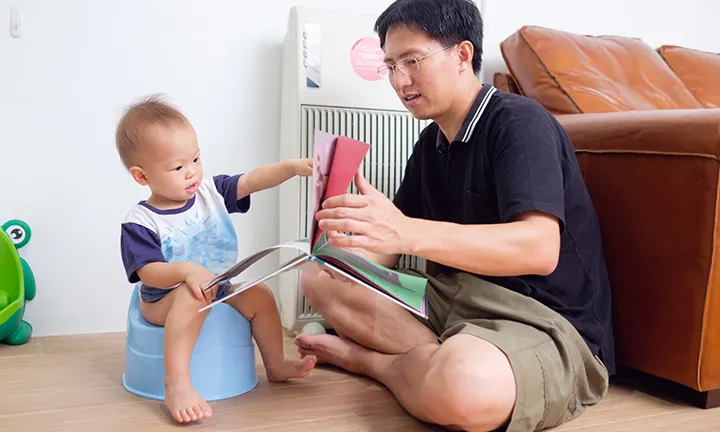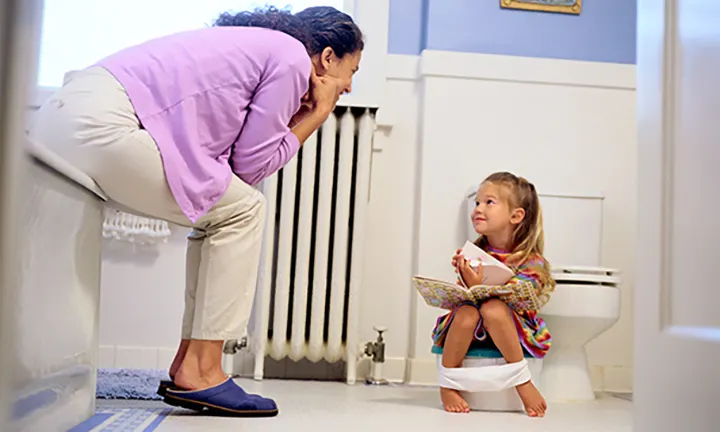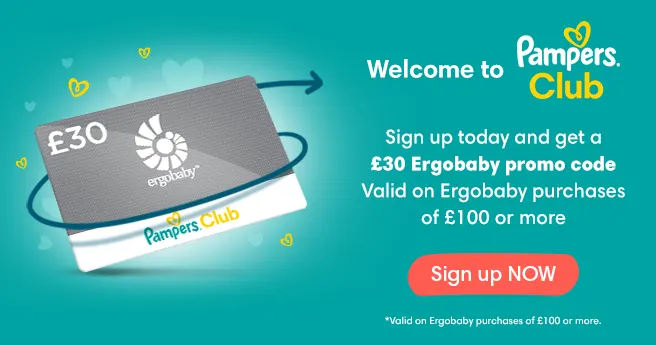23+ Potty Training Tips for Boys and Girls
Potty training is a complex process, and knowing how to train your child, as well as how and when to start, can be tricky. There is no single best way to potty train because every child learns differently, but to help we’ve compiled a list of 23 daytime and 4 night-time potty and toilet training tips to help your baby and toddler get the hang of it a little easier.
How to Potty Train a Baby
If you’re wondering how to start potty-training your baby or toddler or how to encourage or make it fun for your child, our article contains many tips to get your little one started and help them stay on track. Before we delve deeper into the tips, here are a few steps to help get your kid started with potty training:
It’s important to introduce potty training when your child is ready – often this is around 18 months to 2 years old – However, every child is different, and how and when you potty train them may vary for your little one.
Look for signs that your child is ready, like realising they have a dirty nappy or knowing that they need to go. Your child may even be able to communicate to you that they need to wee.
Consider starting potty training with your child when your family routine is stable and consistent and there are no big changes going on in your little one’s life.
Make potty training a gradual process and communicate clearly with your little one so they understand the connection between wee, poo and the bathroom. You can even lead by example by letting them watch and copy how to use the potty or toilet.
Most important of all, try to make potty training a positive experience for your baby or toddler by encouraging them gently, making it fun and remaining patient.
Potty-Training Tips
If you checked out our potty-training steps above, but need some more advice, methods and ideas, we’ve listed plenty of tips and tricks to help you find the best way to start potty training for your little one. So, whether you need tricks to ‘get’ your toddler to poop on the potty during the day, or you want some night-time potty-training advice, we’ve got many tips for you to try:
23 Daytime Potty-Training Tips
Make sure your child is ready. Try not to rush the process and start potty training too early. Look for the signs that your child is ready to start potty training before beginning. Signs include that your little one can go about an hour without a wet nappy and can let you know when they’re going to wee before it happens.
Choose a good time. When your little one is learning how to potty train, it’s best to start in a less busy period when you’ve got plenty of time. So, if you’re moving house, you’ve just had another baby or you are about to go on holiday – for example – now might not be the best time to start potty training.
Get your child involved in choosing the potty. If possible, go shopping for a new potty together with your child. This could make him or her feel more included and more excited about using the brand-new potty. Don’t be surprised if your little one just treats it as just another toy at first. You can help your toddler understand its true purpose by roleplaying with a teddy, doll or action figure using the potty.
Let your toddler set the pace. If you can see that your child needs to go, it’s fine to encourage them to sit on the potty, but don’t make a big issue out of it. In fact, a good strategy might be to let your child think it was their own idea.
Place the potty in a convenient spot. The bathroom is the obvious location for potty training kids (and this can certainly help your child associate going to the loo with this room in your home). However, if that room is in a distant part of the house you may also want to think about placing the potty in your child's bedroom for easy access after naps, or in the playroom.
Have several potties. If you live in a house it can help to have one potty for upstairs and another for downstairs, so there’s always one close at hand. Keeping a spare potty in the car is also useful for potty training while you’re travelling.
Get on a potty schedule. If you know that your little one usually does a poo around the same time every day, leave the nappy off and ask if they want to use the potty instead. If this doesn’t work out, just put the nappy back on and try again in a few weeks’ time.
Go after meals. Eating and digesting food can often trigger the urge to poo, so just after meals can be a good time to sit your child on the potty. It also helps to let your child know that using the potty is a routine thing.
Use a sticker chart to track and reward potty training progress. You can create a potty training progress chart, and then hang it near the potty or in the bathroom. Every time your toddler does a good job, let him or her place a sticker on the chart.
Give praise when praise is due. When your toddler does a good job on the potty, show your appreciation! Commenting on what a big boy or girl your child is for using the potty or loo is a great way of giving encouragement. It’s best to avoid making too much of a big deal out of it though – presents, and especially sweets – could set a bad precedent. If you think your toddler would like to have something to show for each successful loo visit (apart from what gets flushed away) consider using a sticker chart like the one we linked at tip number nine.
Give your baby a book. Read your little one a book about going to the potty while they’re actually on the potty or give your child a favourite picture book to look at. This could help your child pass the time and feel more relaxed.
Dress your child for the occasion. A good potty-training tip is to make sure your child’s clothes are easy to remove. By the time your toddler manages to get out of a favourite superhero costume, dungarees and tights or a unicorn onesie, it might just be too late. It might be helpful to go for hook-and-loop fasteners instead of zips, buttons or straps.
Have naked time. In warm weather (or just inside the house) you might prefer to let your toddler go naked during potty training. This makes it easier to go to the loo because there’s no need to take anything off first. It can also help children who aren’t aware of when they pee, by helping them to link the sensation of peeing with the sight of the wee coming out.
Train by example. When you’re potty training, take your child with you the next time you need to use the toilet to show how easy it is to pee and poo. It can help to explain what’s happening in simple language. Dads might find it easier to teach little boys, and mums might demonstrate the process for girls. However, there’s no hard and fast rule, and you should go with what works for your family.
Consider encouraging the toilet instead of the potty. Some children are happy to start out on a toilet rather than a freestanding potty. If this works for your toddler, all the better! Perching on a grown-up toilet can be daunting for a young child though. Get a toilet seat adapter so your little one feels properly supported during toilet training. A step is also important for boosting your child’s independence and as a footrest to help maintain balance.
Teach your boy to wee sitting down at first. Children of potty-training age may not always be able to judge whether they need to just pee or do a poo as well. If your boy also needs to do a poo, sitting down will encourage him to go. Once your boy has mastered peeing standing up, he sometimes might forget about doing a poo, leading to constipation. This is why it’s still important to sit your little boy on the loo or potty at least once a day.
Teach your girl to wipe from front to back. If your girl has reached the stage of potty training where she’s ready to try wiping her own bottom, teach her the importance of wiping from front to back. This helps prevent urinary tract infections.
Use target practice to encourage your boy. Once your boy’s potty training is on track and he’s ready to try peeing standing up, you can start teaching him how to aim. One way to do this is to drop a piece of O-shaped cereal into the toilet bowl and encourage your boy to take aim. The satisfaction of making the target will serve as positive reinforcement.
Make pooing less scary. For your potty-training child, passing a bowel movement might be frightening. A reluctance to poo can lead to withholding, which could cause constipation. Passing hard stools can be painful, too, and your child may associate pooping with pain. If your toddler says it hurts to poo, it’s OK to let him or her stop trying and have another go later. Try and make potty training fun with ideas such as giving them a book or singing songs, and don’t rush your child. Making sure your baby gets enough fibre in their diet can also help reduce the likelihood of hard, painful poos.
Show and tell. One fun potty-training method for demonstrating that bowel movements are natural and nothing to be afraid of could be to act out a ‘going to the loo’ scene. Use a favourite doll or teddy bear to act out how the doll goes about using the toilet or potty. You can even ask your child to show you themselves how to potty train their doll, to reinforce the lesson.
Don’t flush right away. If you’re using your toilet to train, don’t flush straight away, especially while your boy or girl is still sitting on the loo. The flushing sound can be scary in the early stages of potty training. Introduce the concept of flushing gradually once your toddler has got used to the idea of going to the toilet. Eventually, you could make a fun game out of it — almost like letting your child press the button in a lift.
Don’t punish mistakes. Although potty training struggles can be frustrating at times, resist the urge to get angry or punish your toddler for any potty-training accidents or for not being able to go. Instead, let your child know that it’s OK and they can try again later. Added pressure will not help your infant learn any faster. It may also be that your little one isn’t ready yet, so consider putting potty training on hold for a few days or weeks.
Be prepared for setbacks. All toddlers have the occasional accident, or periods when potty training doesn’t seem to be going as well as before. Don’t be discouraged if this happens. Be patient and encouraging – this is just a normal and natural part of the learning process. Potty training regression can also happen when a child who’s learned to go use the toilet goes back to regularly wetting him or herself or the bed. This could be a response to emotional upheaval, like moving house, although in some cases it could also be due to a bladder infection, tapeworm or another underlying health condition. Talk to your health visitor or doctor if you’re concerned.
Night-Time Potty-Training Tips
Know when your child is ready. Don’t start night-time potty training until your child is already using the potty or toilet during the day. Most children will have reached this milestone by around the age of 4, but every child is different. A sign that your toddler may be ready for night-time potty training is if they wake up with a dry (or only slightly damp) nappy several mornings in a row.
Go last thing before bed. Encourage your child to sit on the potty last thing before bed and keep it nearby in case they want to get up to use it in the night.
Prepare for accidents. A few little accidents are virtually guaranteed, so protecting your child’s mattress with a waterproof sheet during potty training is a good idea.
Keep on praising success. Always show your approval when your little one wakes up in a dry bed. If your child doesn’t seem to be making progress, there’s no need to make a fuss. Just go back to using nappies for a few more weeks before having another go and trying our helpful potty-training tips and tricks.
The Bottom Line
We hope these tips can help you and your child during potty training. Don’t lose hope if it isn’t happening as seamlessly as you’d like. With one or more of these techniques – or perhaps with another one that you’ve found works for you – your little one will eventually get the hang of it.
How We Wrote This Article The information in this article is based on the expert advice found in trusted medical and government sources, such as the National Health Service (NHS). You can find a full list of sources used for this article below. The content on this page should not replace professional medical advice. Always consult medical professionals for full diagnosis and treatment.
Join Pampers Club and get:
